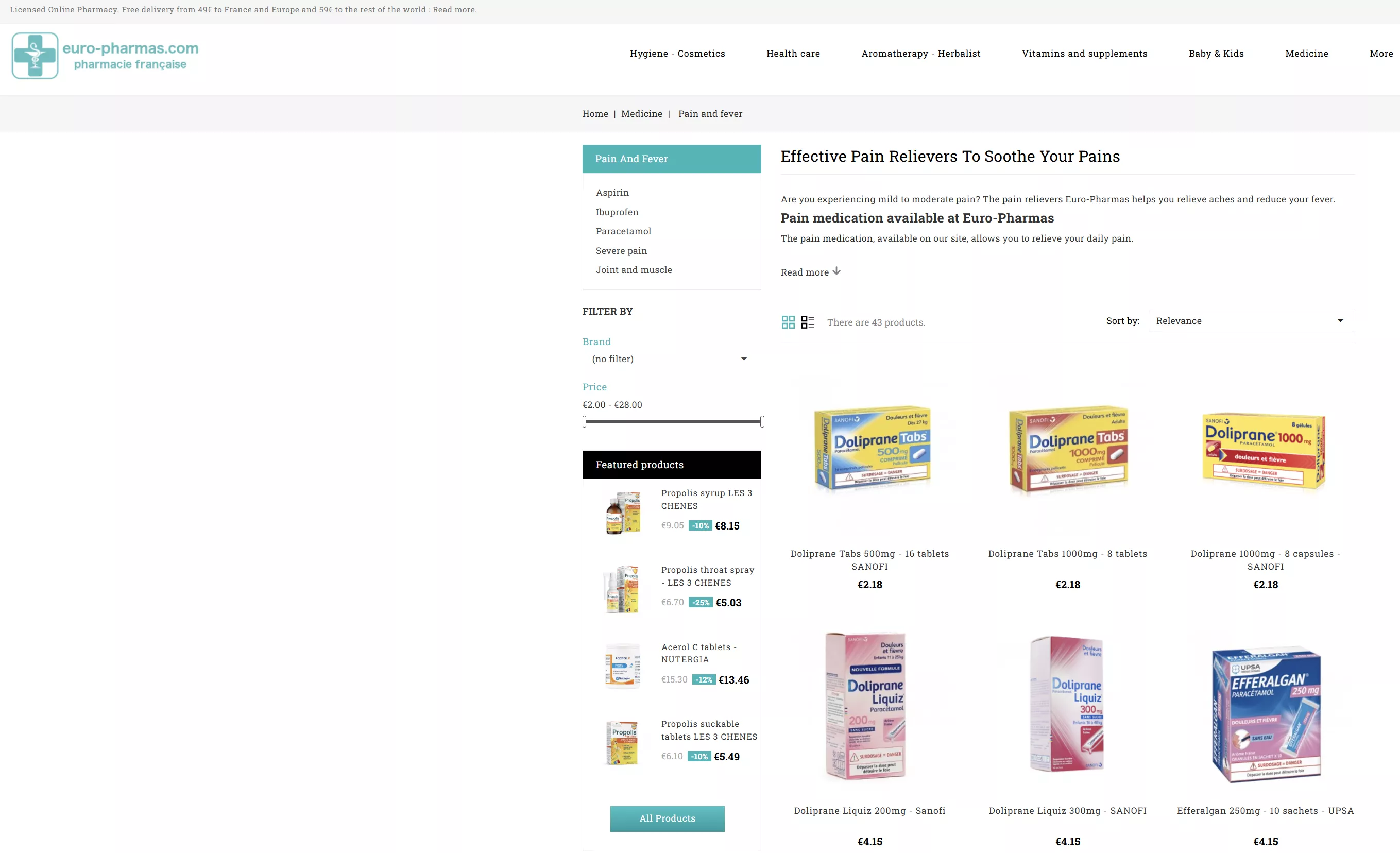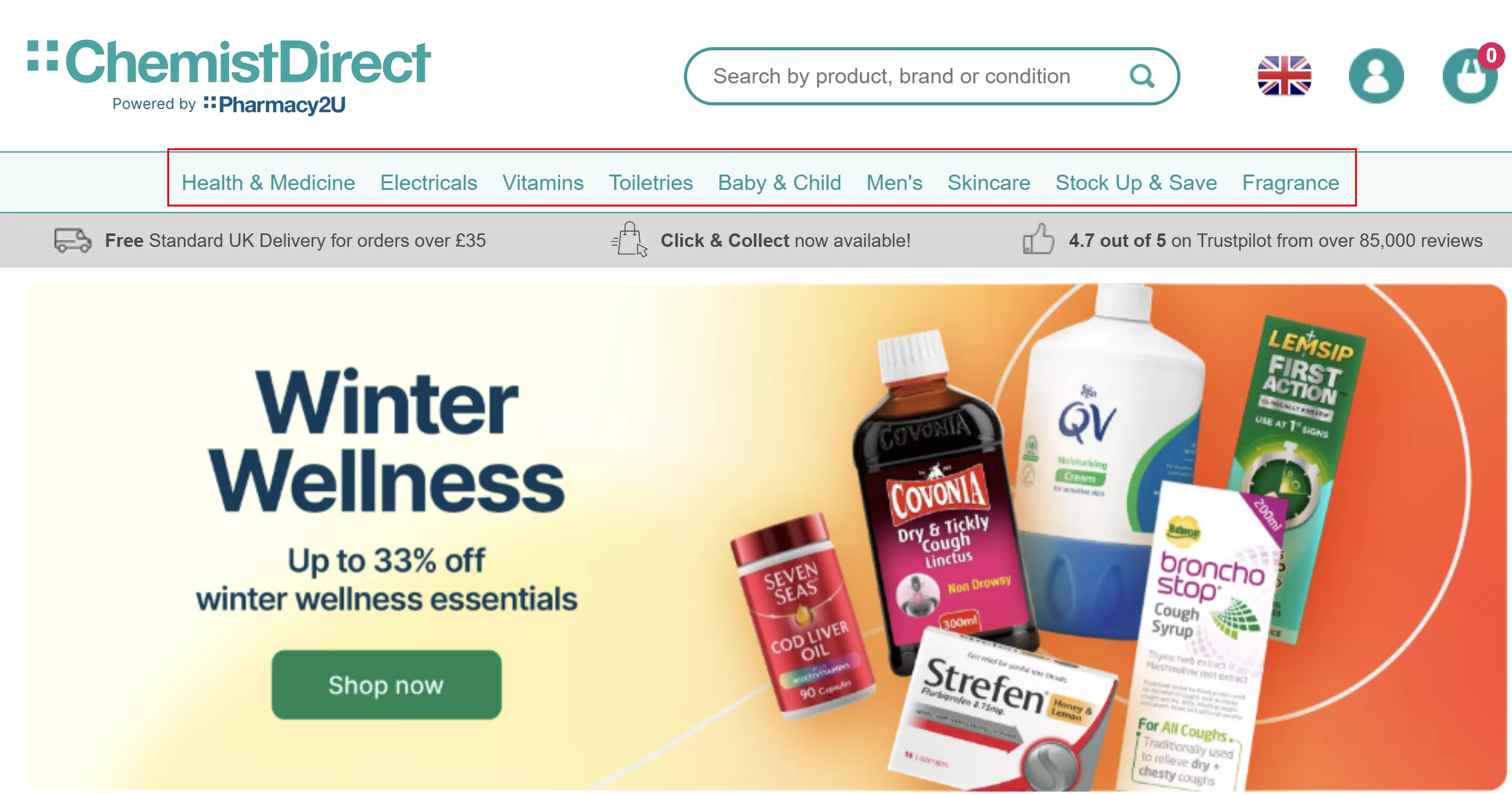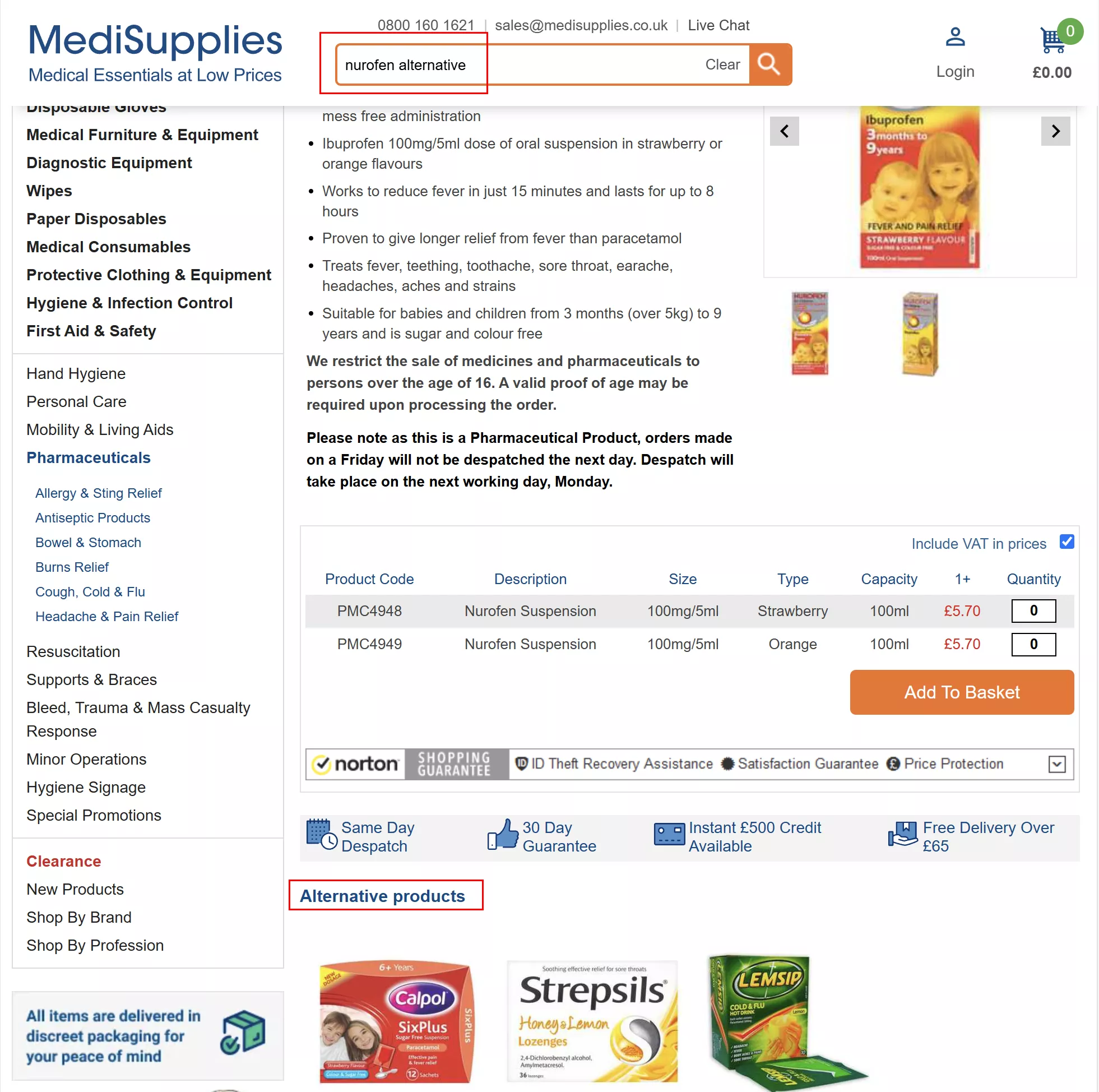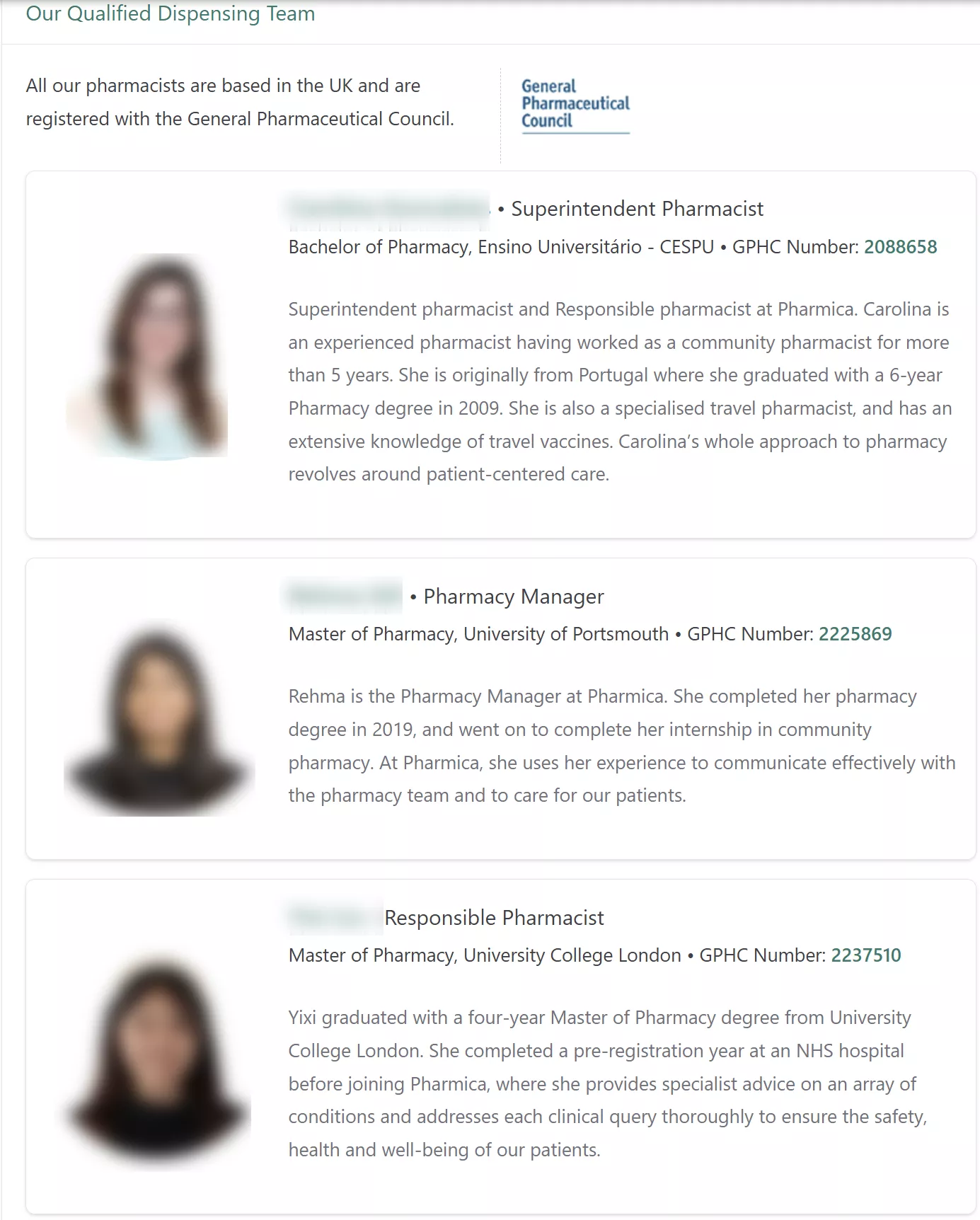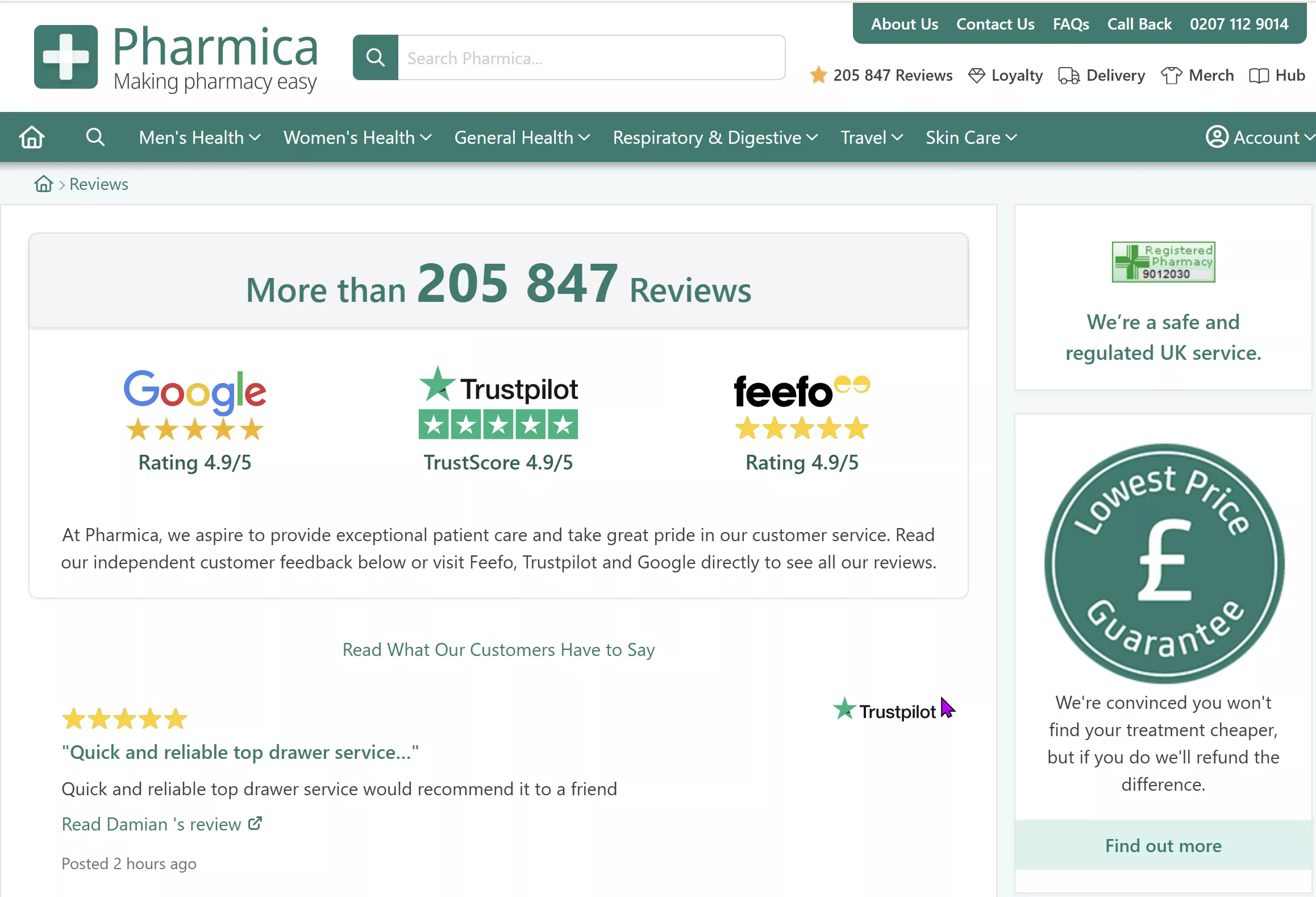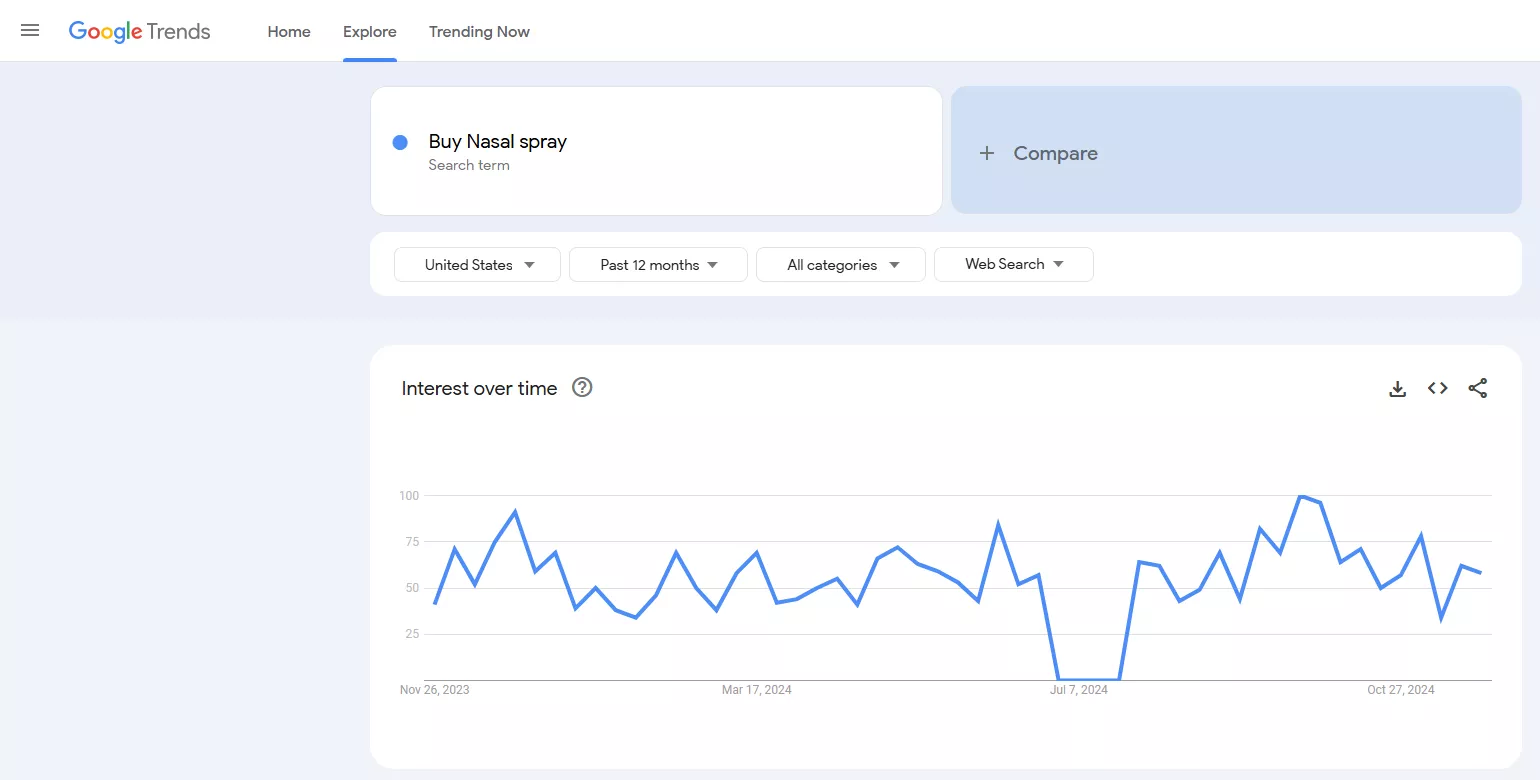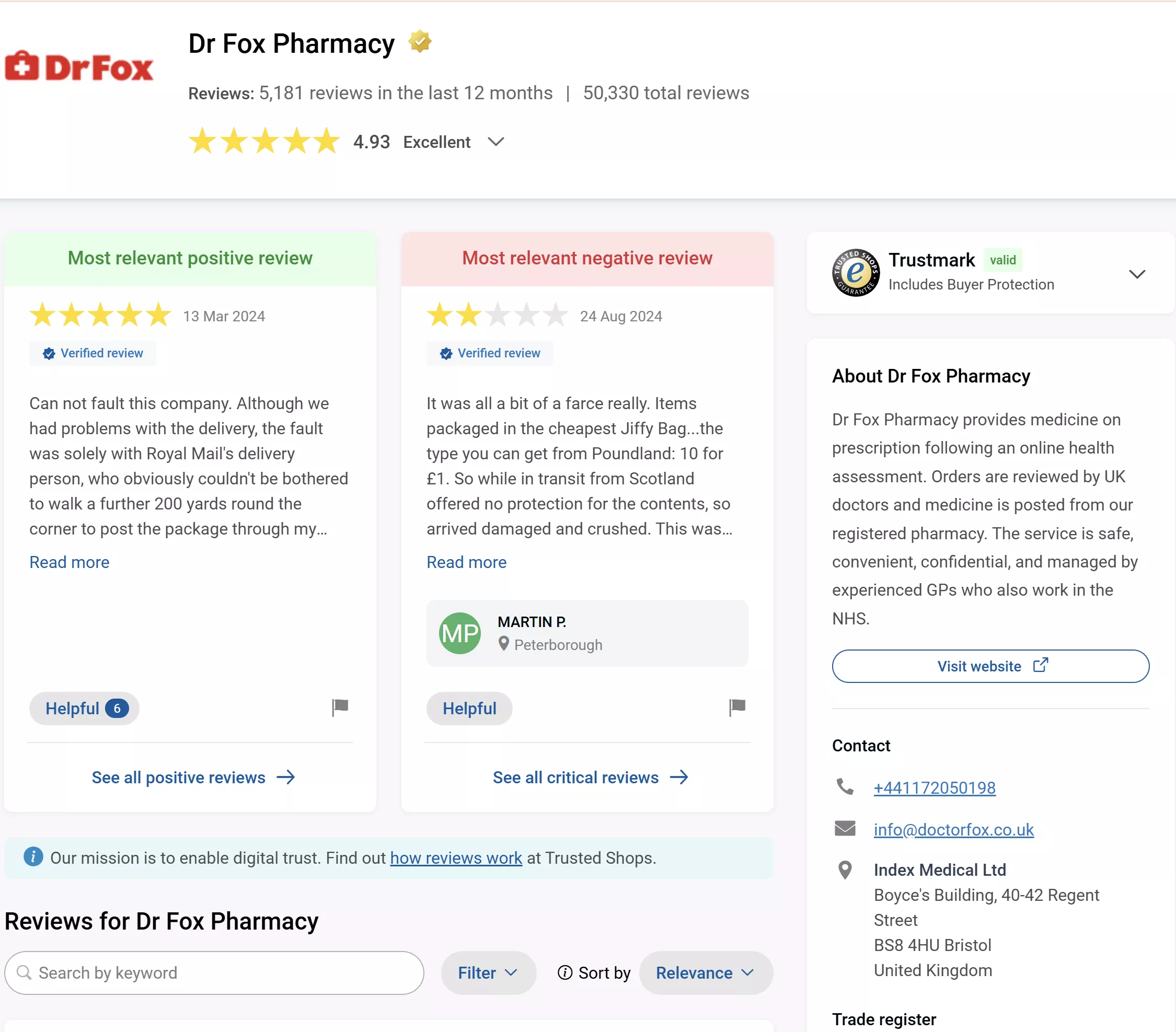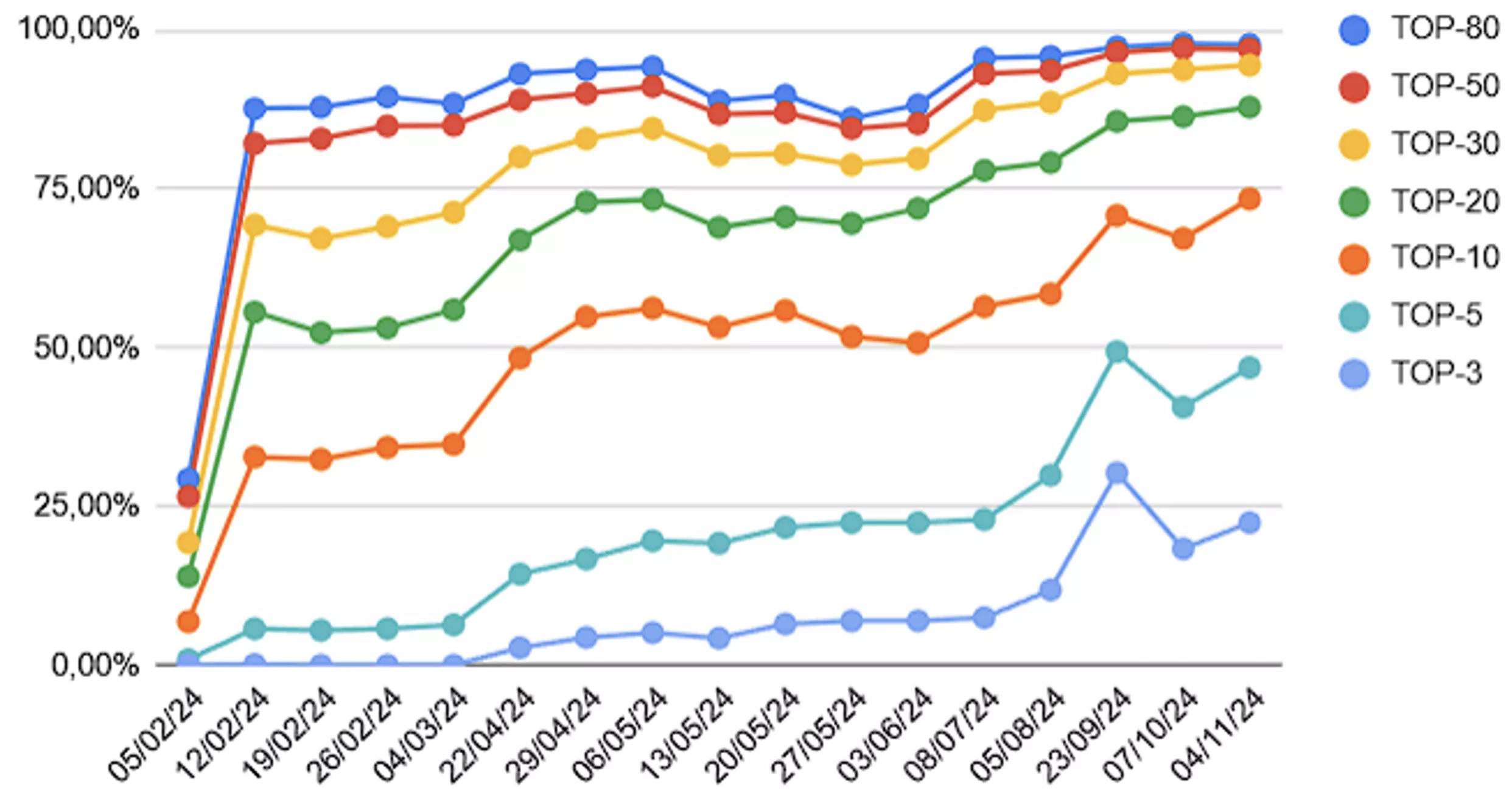SEO Promotion for Medical Websites: All You Need to Know (With Pharmacies as an Example)
Medical websites are closely monitored by search engines. While technical optimization is important, it is only part of what determines the website’s success. The reliability of the content is becoming a key requirement because medical websites have the ability to influence the health of users and therefore their quality of life.
In this article, I will discuss peculiarities of SEO for medical websites and share my experience in promoting pharmacy websites. Specifically, I will talk about what to focus on to gain the trust of search engines and users.
Specifics of pharmacy website promotion
Pharmacy websites are just like web pages for medical resources, which can include:
- Medical centers, diagnostic clinics, and laboratories
- Manufacturers of medicines, medical equipment, and supplies
- Cosmetology offices
- Dental clinics
- Professional medical blogs
- Platforms providing users with beauty and health-related information.
Google pays special attention to all of these resources. To better understand the specifics of promoting medical websites, you must first understand the search engine requirements for them.
The E-E-A-T concept and search engine requirements for YMYL sites
The term “YMYL” stands for Your Money or Your Life. This category includes all sites that provide information affecting the health, safety, and financial well-being of users, including pharmaceutical websites.
In addition to YMYL, in December 2022, Google introduced the concept of E-E-A-T, which is important for medical resources.
E-E-A-T = Experience + Expertise + Authoritativeness + Trustworthiness.
These are the factors used by the search engine to evaluate and measure the credibility of a company, brand, or website.
The requirements are as follows:
- High-quality, professional, and accurate published content.
- Comprehensive and useful information on the site pages.
- The site has a positive reputation.
- No promotion of dubious drugs and diets, and no advice from unauthorized professionals.
E-E-A-T plays a key role in determining the quality of YMYL content.
For example, a medical blog written by an experienced and board-certified physician is considered more reliable than a blog written by a non-professional.
In addition, the advertising of medical services and goods is subject to numerous restrictions, including at the legislative level. Therefore, the largest source of traffic in the medical niche is organic search.
Dive into our glossary for key SEO definitions to boost your expertise!
Product category structure
Pharmacy websites tend to have hundreds and sometimes thousands of pages. A logical structure is therefore crucial: it makes it easier for users to navigate and optimizes the site for search queries.
Let's look at the main types of pages used to create a catalog and add structure to a pharmacy website.
Product pages
The lion's share of traffic to pharmacy sites comes from product pages. Therefore, it would be ideal to distribute the content according to the following principles to improve navigation and SEO.
- General drug pages. These contain information about the drug's characteristics, purpose, and conditions of use. Their aim is to allow users to quickly find the right drug by category or symptom.
- Trade name pages. This type of page is required for drugs with variations in dosage, dosage form, or number of pills in a package.
- Specific product pages that are dedicated to a single drug with comprehensive information about that drug.
Category pages
Categories should include all major product groups so that users can navigate quickly. The most common categories are:
- Drugs
- Cosmetics and toiletries
- Medical devices and equipment
- Products for mothers and children
- Healthy lifestyle products
- Vitamins and supplements
Dividing products into categories allows users to easily find the medicines they need and search engines to rank pages by thematic queries.
Each product category has its own subcategories. For example, in the Drugs category, it would be appropriate to subdivide products by prescription:
- Medicines for a cold
- Medicines for the heart
- Anti-inflammatories
Active substances pages
The active substance pages cover an additional pool of queries that the drug pages do not cover. However, there are situations where the name of the drug and the active ingredient are the same (for example, Ambroxol). In this case, two pages will be in the search results for the query buy ambroxol.
This is typical for pharmacy websites, as searches often compete with each other. Such competition leads to cannibalization.
Query cannibalization can have undesirable effects. As different pages on the site compete for the same keywords, the search engine struggles to determine which pages are more relevant to the query. None of the pages get ranked highly in search results. As a result, each page gets less exposure, views, and conversions.
There are two ways to solve the cannibalization problem.
- Remove the pages with the worst rankings from the index.
- Leave both options in the index, but strengthen the already better-ranked page.
Drug analog pages
Medicine supply pages should also be included on the website. They meet a certain demand and increase the site’s visibility in search engines, especially for users looking for alternatives to their usual medicines.
I recommend adding comparison tables and descriptions of medicines with similar composition and effects to such pages. It is also advisable to display the price to make it easier for the user to compare different medicines.
Case study. The 9-1-1 Pharmacy has been operating in the Ukrainian market for over 10 years. Today, it comprises more than 1,300 offline pharmacies across the country and helps 20,000 Ukrainians find medicines every day. Their team contacted Netpeak Ukraine to increase organic traffic and website visibility in search engines.
What did Netpeak specialists do?
- Developed a strategy focused on optimizing new sections of the website.
- Increased the pace of text creation for category pages.
- Accelerated the creation of external links to the pages of the site.
- Reviewed the site structure and eliminated problems related to search query cannibalization.
The results: Organic traffic increased by 93%, and site visibility increased by 488%. Average monthly revenue from the organic channel increased by 18.7%.
Special features of pharmacy content
Expert and scientifically accurate content is what distinguishes any medical resource. It is content that builds credibility and trust.
Below are key recommendations to elevate the content of pages.
Consider E-E-A-T factors
Publish only accurate content on your site. It should be written or at least edited by professionals with the appropriate training and experience. If the pharmacy does not have an in-house content creator, look for content specialists on medical professional platforms.
Don't rely on artificial intelligence to create content. AI-generated text often contains errors or distorts information. This is particularly dangerous in the medical field.
To increase the expertise and credibility of the resource, create pages that state the profiles of the content creators. Include information on the page that confirms the writer or editor’s competence.
- Information about education
- Specialization and work experience
- Certificates, awards, and information about participation in industry events
- Published professional materials
- Links to social media profiles
Tip: I recommend including links to authoritative sources in your articles. This adds credibility to the material and shows that it is based on reliable research. In doing so, it helps the website adhere to the E-E-A-T principles, especially credibility and truthfulness.
Create complete product pages
The product page should contain the manufacturer's complete instructions. For the convenience of the user, it is also worth adding an excerpt from the manufacturer's instructions with the most important information.
In such a block, information is often presented in the form of infographics for better understanding.
Texts with basic information about the product can be written by copywriters experienced in writing such content. However, proofreading by a medical professional is required.
You should also include information about the authors at the end of the article. Links to the pages of these specialists on the site will be useful.
Include reviews and references
To build trust in your site and content, publish as much information about your company and services as possible. This includes:
- An "About Us" page that describes the company's history, values, ideas, and goals
- Proof of expertise and reliability (documents, certificates, awards)
- A block of reviews
- Order, delivery, and return policies
- Contact information on how to get in touch
- Links to social networking sites
- Privacy policy
In addition to being factually correct and detailed, content must also meet general SEO requirements.
To improve the quality of the material, it is important to:
- Thoroughly research key queries and create a keyword list.
- Include a variety of LSI queries (latent semantic indexing keywords) in the text.
- Follow the recommendations for creating optimized SEO text.
- Create a FAQ section that answers frequently asked questions about the drug or product category.
Keyword analysis
Keyword analysis is the basis for attracting traffic from search engines. When promoting pharmacy websites, you must build and order a list of key queries, dividing them into topics and product categories. You must also define the keywords and phrases site visitors use to find medications.
It is important to consider the type of query (search intent) of the keyword.
- Informational queries. Their purpose is to obtain information about a product or service. In most cases, they contain or imply questions.
- Low-intent queries with no specific purpose. They are high-frequency and highly competitive. Large projects and sites with long histories and impeccable reputations are most likely to be ranked for these queries.
- Transactional queries are used when the user is about to perform a specific action (buy, order, subscribe).
- Navigational or branded queries are about specific brands by name.
- Visual queries focus on finding media content.
Among the search queries people use to find medications, the most common are informational and transactional. Here are some examples.
Informational:
- Drug name + analogs
- Drug name + reviews
- Drug name + directions
- Drug Name + indications
- Drug name + city
- Description of symptoms + what to take
Transactional:
- buy + drug name
- drug name + price
- buy + drug name + city
Demand for many medications tends to spike at certain times of the year, so it's worth paying attention to seasonal demand. For example, during the cold months, there is a significant increase in interest in drugs to treat colds and rhinitis. Searches for these drugs are low in the summer, but in the winter or late fall, the frequency increases significantly.
You can use Google Trends or other analytics tools to track changes in demand. For example, in the USA, the search query "buy nasal spray" increases from late fall to early spring.
It’s important for pharmaceutical companies to understand the seasonality of search requests and track them in real time. This data will help them adjust marketing campaigns and prepare inventory for peak periods.
Link building
To effectively promote pharmacy websites, it is important to build links on external platforms.
Here are some platforms for placing links in the medical niche:
- Thematic and related sites
- Author blogs of other specialists
- Medical conference websites
- Regional health and beauty forums
- Blogs of medical educational institutions
According to an AuthorityHacker survey about link building techniques, 618 out of 755 participants said that the impact of links on search rankings becomes noticeable between 1 and 6 months. On average, it takes 3.1 months.
It is advisable to publish materials on reputable medical resources. However, it is not always possible to rely on such sites exclusively because narrowly specialized sites have restrictions or high requirements. In such cases, it is acceptable to publish on more general but still high-quality resources.
What to look for when choosing platforms:
- A domain rating of at least 30
- Organic traffic to the site comprising at least 2000 visitors per month
- More inbound links to the resource than outbound links
- The site has sections relevant to health, beauty, and medicine
- Several articles on medical topics on the site
- Growing traffic dynamics
Read our blog to learn more about how and where to place links.
Working with brand reputation
Since medical websites receive special attention from Google, a good reputation is extremely important.
Therefore, you must work to create a positive image of the company in users' eyes. SERM (Search Engine Reputation Management) can help you with this.
On pharmacy websites, there should be an option to leave a comment and rate the experience of interacting with the company. It is often through comments and ratings that the primary interaction that forms the impression of the service takes place.
Most often, users share their experiences about:
- Quality of goods. This includes the effectiveness of products and whether they match the descriptions. Users may also indicate whether the products meet their advertised characteristics and whether they helped.
- Customer service and support. Feedback on assistance from staff, recommendations, and advice from pharmacists or managers on the choice of products.
- Delivery speed. Users may describe the delivery experience, including time of arrival, time frame accuracy, and product packaging condition.
- Website usability. They may share comments on ease of navigation, ordering process, product search, and availability of necessary information on the site.
- Pricing and promotions. They may share their experience with the pricing policy and the availability of discounts and promotions.
Brand reputation management includes:
- Active participation in user interactions.
- Analyzing feedback to identify problematic aspects of the company.
- Providing timely and comprehensive responses to both positive and negative feedback.
- Creating content that promotes a positive brand image.
Read the case study on how SERM helped significantly increase the number of positive reviews in the top 10 search results, strengthen the reputation, and increase the visibility of the medical brand Synevo.
Local SEO
For the best advertising results, it is important to create geo pages — pages that focus on a specific region or location. This increases their chances of ranking highly in search engines.
Optimize visibility
If your pharmacy chain has physical locations, you should add them to Google Maps. This will:
- Improve the ranking of pages in the relevant location.
- Become an additional source of website traffic and pharmacy foot traffic.
Expand your reach
I recommend creating geo pages not only for large cities but also for small towns. This will reach a wider audience and increase the chances of ranking in a particular area.
It may seem like creating pages for each location is an outdated practice. However, experience shows that it still brings good results.
Attract a local audience
Even if a pharmacy does not have a physical presence, it is advisable to create a geo page. It will increase the likelihood that a user located in that region will find the chain's page and go to the website. Although the likelihood of conversion is lower than if you had an offline store, it still exists.
Make search convenient
If there is a pharmacy branch in a specific city, its page will be useful for those who plan to buy medicines offline. This approach will also increase conversion because it is more convenient for the user to find and visit the nearest pharmacy than to order online.
If you want to improve your business visibility in local search results, consider Local SEO Services to help you appear more often in the local pack and attract nearby customers.
SEO performance analysis
To get an objective picture of SEO results, you should not only track traffic but also position dynamics because traffic is subject to seasonal fluctuations. A decrease in the flow of users does not always mean something negative is happening to the site.
For example, the frequency of searches for certain medications increases during the cold season and naturally decreases over time. Traffic during the peak season is not an objective indicator of changes in visibility because the increase or decrease in demand is temporary.
Keyword rankings are a more objective indicator than traffic.
If certain queries are dropping, you should analyze your strategy and identify possible reasons, such as changes in the search engine algorithm or new content from competitors.
Google Search Console and Serpstat are great for tracking positions for targeted keywords and tracking organic traffic.
For daily work, I use custom dashboards in Google Spreadsheets or Looker Studio.
Ensure that these tasks are performed efficiently:
- Automate reporting to show clients real indicators and their dynamics. Increase transparency and avoid misunderstandings.
- Segment by areas. Dashboards include the dynamics of positions for different groups of pages and queries to see changes in each segment.
- Provide conclusions and recommendations. Help analyze the reasons for changes in rankings and identify actions to improve visibility.
Of course, the most important KPIs are revenue and number of transactions. But it all starts with relevant search queries and their positions.
Let’s summarize
- Medical websites, especially pharmacies, are in the YMYL (Your Money or Your Life) category. Google requires a high level of reliability and expertise from them.
- Publish only accurate and truthful content on your website. Only certified professionals should be allowed to create or at least edit medical content.
- Information about the authors of the content should be publicly available, and their expertise should be easy to verify. To do this, create specialized pages on your site and link to them.
- Remember to check the reputation of external platforms where you plan to publish content.
- Pages focused on a particular region increase the chances of attracting local search traffic.
- Reputation management is an important consideration for pharmacies. Keep track of reviews left by website visitors and address them promptly.
Related Articles
Should I Keep My Blog on a Subdomain for SEO?
Discover whether the idea to keep a blog on a subdomain is worth a shot for your business. See the perks of having your blog on a subfolder based on our expertise.
What Is Amazon Brand Registry and How Does It Work?
In this article, I will explain the program's features, how to register your brand, and how to improve product promotion using the program. I will also present some successful case studies
How to Improve Content with Natural Language Processing
In this article, I will explain what natural language processing (NLP) is and how to apply it in practice with examples

